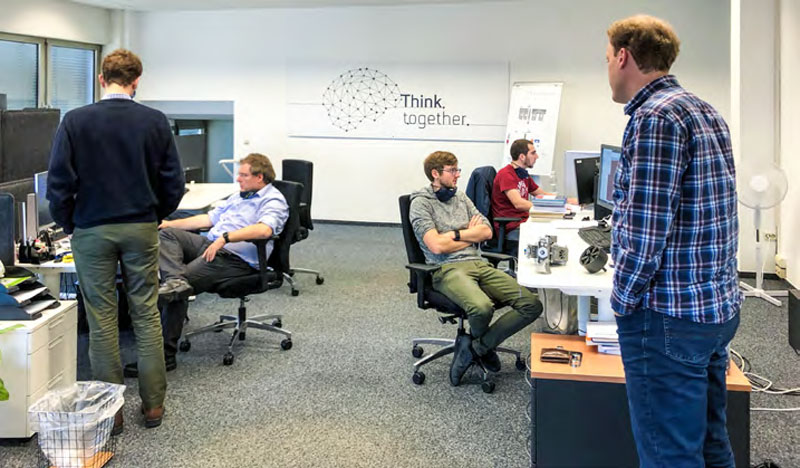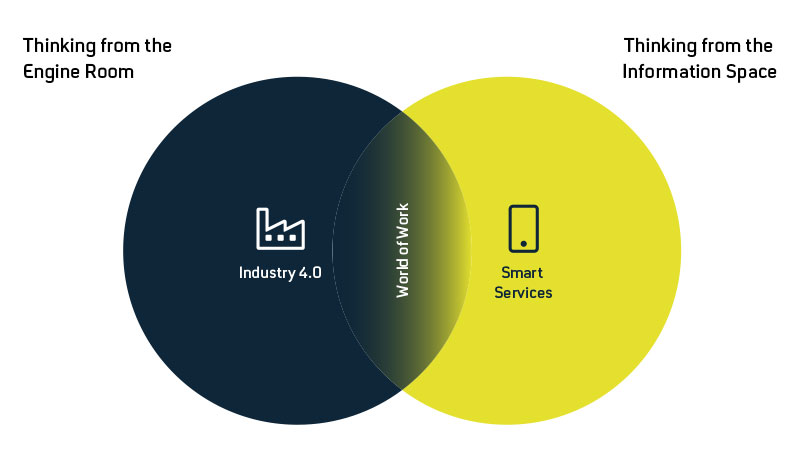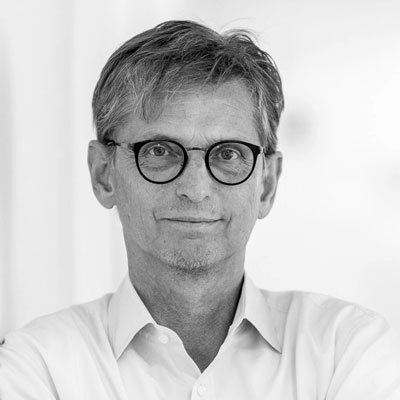Companies in times of digital and social transformation
Basic theories for successful development of organizations
At the very moment the economic world seems to be turned upside down. For some years already we have observed that decisive changes in society and technology have strongly changed the framework for our economic activities. The result: Worldwide the company leaders take their decisions by sight, a long term planning is almost impossible.
In addition the actual Corona pandemic leaves signs of worries on the faces of many company executives. A pandemic of unforeseen extent seems to occupy their entire thinking and acting, and that’s for sure reasonable. The health of their employees is in focus of their thoughts. Whilst some companies do profit from the pandemic and show high increases in turnover many others have to fight for their economic survival.
This in mind the ongoing change of paradigm within the structure of organizations has become a real driver for innovations. However it seems that not all company leaders have recognized already that their enterprise will only have a chance to survive if they take the challenges of a changing world.
This paper describes the starting point situation and shall give non-sector specific advices for necessary changes within organizational structures and processes of companies in order to make them weather resistant for the future.
Change or leave
At the very moments it may happen that some company owners go to bed as head of a trading or industrial company and wake up as a software boss the next day. The industrial revolution is not only moving industrial and trade frontiers but even entire eco-systems like politics, health, education and our total social system. We are in a transition phase from a “path routed” engine room towards a “smart information room”. Therefore we have to reflect our business models. We can find obvious examples when looking at the USA: The world’s biggest taxi company (Uber) does not have a single cab. And the worldwide biggest hotel chain (Airbnb) does not possess a single hotel.
In general most companies show classic organizational structures. Their organization charts, the maps of the companies, define the organizational units and the hierarchical order and rule the decision authorizations and ways of information. In praxis we find informal structures, which are shaped e.g. by sympathy or personal relations and which often reflect the real situations and structures within the company. Hierarchies with clear vertically aligned structures enable that tasks are fulfilled efficiently, understandably and planned.
However, our world is constantly changing at such a high speed that our traditional organizational structures are not able to react sufficiently. Therefore the challenge to develop new organizational structures is of central importance to all companies independent from size or sector. In the coming years two developments will push the change in the structure of organizations forward.
Digitalization: The fastest revolution ever
The constantly growing capacity of computer and IT technologies is one of the most important drivers for changes in our daily living and working surroundings. The speed is not developing linear but exponential as it has to cope with the developing speed of technology.
Even for regional active companies markets have developed transregional or global but for sure highly dynamic. New competitors appear, often with digital business models, penetrate and attack well established suppliers. Our companies face and have to master the paradox of a more and more complex world and to satisfy their customers’ demands for faster, simpler and tailored solutions at the same time.
Demography: Less and different
Whilst by 2035 the baby boomer generation will have left the labor market, fewer children will be born so that less manpower will be available on the labor market. This initializes the digitalization in our working processes. Hereto adds the change in expectations of potential applicants from their future employer which could be noted in recent years already.
Employers recognize that money and a safe job are still of importance for their employees, however meaningfulness, individual development perspectives and the working surroundings have gained growing importance. Work-life-balance is coming more and more in focus and companies have to loosen formerly strict fixed working times and places by creative spaces for their employees.
Paths of transformation
Especially for the German medium size companies with an extreme planning and safety mindset it means to move from a rather patriarchic via an hierarchically shaped organization model with agile structures and parallel organizations towards a hybrid model. Only by this way they will be able to react flexibly against the high dynamic of coming changes.
To make this organizational change performing well, several preconditions are necessary which have to be established by the company executives.
In a more and more complex world the assumed contradictions of efficiency and target orientation, controlling and enabling employees as well as planning and experimenting have to be handled carefully. A complete rethinking becomes necessary that opens up the rigid and only hierarchically driven work and which opposes long term planning, safety and efficiency thinking versus an agile working style that puts the competences and needs of the employees in focus.
Hybrid organizations
By implementing inter disciplinary and temporary teams companies make use of the distributed intelligence and diversity of their employees for their adaption ability and their success. Based on a flat hierarchy in the background companies of the future will organize their operative work by networking. Such networks don’t only consist of divisions and departments but also competence heads from various units and hierarchy levels that are long term related by following up common targets. Project leaders are independent from hierarchy and may change according to projects even within a project itself. There is a growing tendency to also incorporate external specialists in temporary project teams.
Considering the fact that more and more intelligent products will be interconnected via technological platforms and spreading value chains, the pressure is increasing for an industry spanning cooperation of different experts and production fields of other companies and sciences as well. In future for many companies it will not be possible to develop and build such interconnected products by themselves alone. The necessity of a company spanning exchange is getting more and more in focus. A number of companies will be forced to collaborate as cooperation and flexible working in projects will become decisive factors for success.
The management coordinates the teams along the company’s internal and strategic priorities and decentralizes decision making drastically - at least the preparation of decisions. The greatest change for the executives will be to delegate their entire knowledge and decision power.
More experimenting, less planning
In our new world companies with their classic tools will reach their limits. Planning of short, medium or long term targets will be replaced by readiness to experiment. Just now in times of pandemic companies are forced to do so and if you want to see one positive sign herein you can say that the readiness and ability of companies to change has taken up impressive speed already.
Our logic of organization will have to change. The main task will be to identify problems, to develop ideas for solutions, to test, to continue testing and sometimes to reject. Flexibility, ability to adapt and the developing speed will become decisive for the future of a company not its size.
Constructing lighthouses
In times of all these outer and inner changes it is necessary to have a reliable anchor that gives orientation. People look for meaningfulness also in their working atmosphere. So it becomes important that personal and company targets become congruent.
Tasks and processes will be more and more digitalized and employees will be released from monotonous and repetitive tasks thus offering them more freedom and space to work on new ideas and challenges.
Companies which flexibly accept such changing frameworks of conditions must set their meaningful purpose in focus. This can be achieved by describing their vision of a positive and if possible emotionally loaded image of the company in a worthwhile future.
The vision shows the higher ranked company targets and gives orientation for the employees, the autonomous project teams and for customers and partners as well.
How the vision can be achieved is described by the mission. Based on the mission the employees can verify themselves how their own work contributes that their company reaches its vision step by step. However, precondition is that the management itself clearly communicates its vision and mission and truthfully explains that every employee is important to reach this company aim.
Cultivating the field of company culture
Most of us long for stability in their private and professional life. That’s why quite often changes may initiate basic question or even fear. Especially when people are not used to changes as they arise only seldom.
Our learned pattern of thinking and behavior in relation to various systems of rules which every company chooses for its organization leads us to routine. Finally the culture of a company is formed by such patterns of thinking and behavior as well as the “routines” which create stability.
This will become even more important in future because of the increasing volatility in almost every area of our working life.
As explained the company culture also sets limits towards the flexibility of a company. In order to remain or to become more flexible the management has to initiate a process that offers space for changes within the existing company’s culture.
Breaking the power of routines
In view of this obvious contradiction between stability and the necessity for change it needs to open-up old, automated thinking and behavior patterns on the basis of a common meaningful platform. However, the dilemma is: This cannot be influenced by the management, it can only be achieved by the employees themselves.

The management must introduce new game rules which are supported by the employees. It’s not about extinguishing old thinking and behavior patterns but the company has to open itself for strangers, sample breakers, disruptors, transformers and tinkers.
For those we have to offer “green fields” for new thinking and working as e.g. (Co-) Working Spaces and Labs. Instead of fixed organization and process formats it must be possible that employees can organize themselves, try experiments and bring in their competences like it happened in “club of the dead poets”. Only in this way a company can stay flexible and ready to react fast on changing conditions.
The mentioned changes represent quite a challenge for the executives and the employees. The good news however is: the younger generation of employees prefers to work independent from hierarchy on exciting projects in agile networks.
Summary
The growing capacity of computer technologies, the increasing speed of developments with constantly shorter innovation cycles, the increasing pressure in competition and the changing expectations of customers and employees force today’s companies to increase their own speed of change and flexibility of their organization. For this the classic hierarchical structures and processes are not useful, as every modification will make complex processes slower, increase fault possibility and inactivity.
Following the way of increased network organization companies open up the classic company department structure. For hierarchical shaped company organizations this will represent a real “mindset-shift”.
The target will be to go for a hybrid organization in order to become faster operative by reacting strategically and economically on volatile changing frame work conditions.
Should company owners decide to implement a complex hybrid organization model then operative decisions have to be decentralized drastically and they must control the different projects and teams following their entrepreneurial and strategic priorities.






![[Translate to Englisch:] [Translate to Englisch:]](/fileadmin/experience/2024/05/Technikunterricht.jpg)
![[Translate to Englisch:] [Translate to Englisch:]](/fileadmin/experience/2024/05/Annika_Becker.jpg)
![[Translate to Englisch:] [Translate to Englisch:]](/fileadmin/experience/2024/05/wohnzimmer.jpg)
![[Translate to Englisch:] [Translate to Englisch:]](/fileadmin/experience/2024/05/Niederhofer_berg.jpg)
![[Translate to Englisch:] [Translate to Englisch:]](/fileadmin/experience/2024/05/Baustelle_kran.jpg)
![[Translate to Englisch:] [Translate to Englisch:]](/fileadmin/experience/2024/05/GEORG_AISTECH_2024_experience.jpg)
